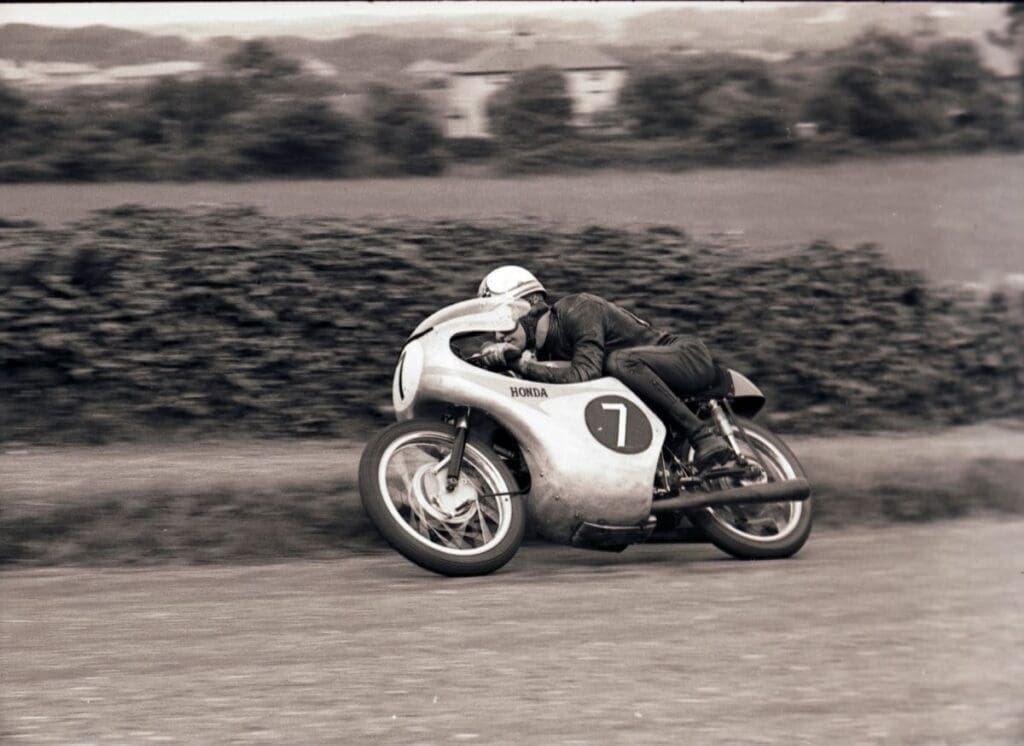Honda is a huge name in the motorcycle industry, responsible for a whole host of iconic bikes. But how did it all begin? Let’s take a ride through the history of Honda motorcycles, exploring the key milestones and groundbreaking models that have shaped the brand’s legacy.

Early beginnings
Honda motorcycles began in 1946 when Japanese engineer Soichiro Honda founded the Honda Technical Research Institute. The company’s initial focus was on developing motorised bicycles equipped with surplus war-time engines. This led to the creation of the first Honda motorcycle, the Dream D-Type, in 1949.
The company grew quickly, becoming the world’s largest motorcycle brand by 1955, a title it still claims to this day. However, it was the introduction of the Super Cub in 1958 that truly marked Honda’s breakthrough. The affordable Super Cub, with its step-through design, automatic clutch, and four-stroke engine, brought motorcycles to the masses and set the stage for Honda’s global success.
Racing dominance
The 1960s witnessed Honda’s ascent to racing dominance. After some initial failures, Honda soon achieved the Isle of Man TT success in ’61. And this success on the track translated into commercial success, making Honda motorcycles even more popular worldwide.
Meanwhile, Honda was expanding onto four wheels, but didn’t leave the motorcycle world behind, introducing bikes such as the CB750 in 1969, often credited as the world’s first superbike.
Innovation and expansion
The following decades were a time of innovation and diversification for Honda. The introduction of the VFR750F in 1986 showcased Honda’s prowess in sport-touring motorcycles, and the Gold Wing series, launched in 1975, set new standards for long-distance touring bikes.
Honda also forayed into off-road motorcycles. The CR series, beginning with the CR125M in 1973, became synonymous with motocross success, and the introduction of the iconic Africa Twin in 1988, a dual-sport motorcycle designed for adventure riding, solidified this position.
Still going strong
Entering the 21st century, Honda continued to evolve its motorcycle lineup. The Honda VFR1200F, introduced in 2009, incorporated a dual-clutch transmission, and in 2013, Honda introduced the CTX700 series, a line of motorcycles designed for urban commuting with a focus on fuel efficiency and ease of use.
Looking to the future, Honda is embracing electric mobility with the unveiling of electric concept motorcycles and the production of electric scooters. As the motorcycle industry undergoes a shift towards cleaner technologies, Honda is positioning itself as a pioneer in electric two-wheelers.
Some underrated favourites
The CB175
While all eyes were on the CB750, the world’s first superbike, some of Honda’s smaller bikes were – understandably – slipping under the radar. The CB175 was one of them. Designed to fill the void between the 100-125 market and the 250s, the CB750s baby sister deserves her share of the spotlight.
The VT500
In the early 80s, Honda made the controversial decision to dump the hugely popular CX500 V-twin, and the VT500 became the official replacement. And there was not just one version to choose from, but three. The VT500E, the VT500FT Ascot and the VT500 Shadow were all very different options.
The CB250RS
An almost forgotten gem of the 80s, the 250RS had only a short-lived stint in the showrooms between 1980 and 1984… Yet anybody who has ever owned one waxes lyrical about this little beauty.
The CBX750
As the first of the V-fours weren’t exactly flying out of the showrooms, the 747cc inline four-cylinder CBX750 was put into the European line-up for 1984, while also being sold in the Australian and South African markets.
Honda Bros 400 and 650
That was the name in Japan. In the US, it was the Honda Hawk GT 650 – there was no 400. And in the UK, there were no name as all – we didn’t get either. Our loss, because whatever you want to call them, these are interesting bikes – if a bit of a departure for Honda.
The CB550/4
Despite often being overshadowed by the big boys, Honda’s CB550/4 offering has its own charms, and comes with a lot less bulk compared to its bigger brother.




